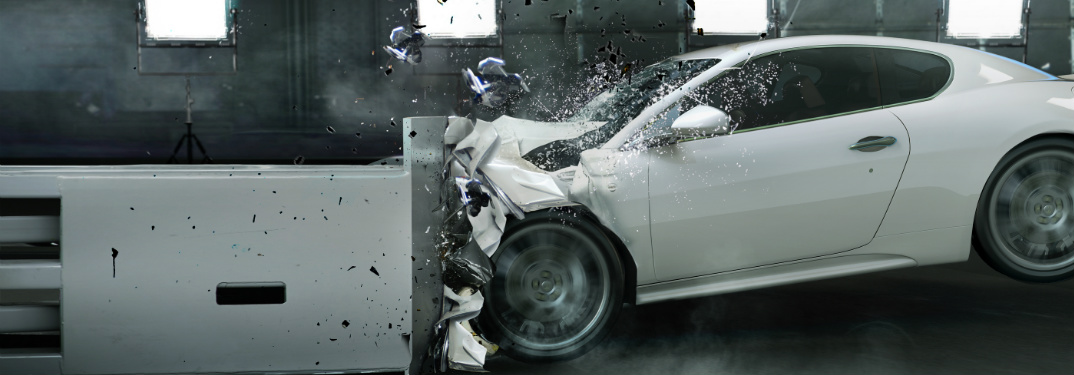
Car accidents are a big deal. With an average of six million occurring each year, they continue to be an ongoing problem. To cope with this, manufacturers have come up with a variety of safety features on their vehicles, while also continuously improving engineering to increase the security for those inside.
But we can’t just take the manufacturers’ word for it. Someone out there has to step up and test these features and engineering to see if they really help. Luckily, two organizations have stepped in to fill that void: the NHTSA and IIHS both test cars and publish evaluations of their safety.
But what do the safety tests consist of? What do the NHTSA and IIHS do with crash test cars?
 The Art of Crash Testing
The Art of Crash Testing
Unfortunately, crash-testing cars doesn’t consist of over-the-top procedures like slamming vehicles against brick walls or tossing them off building tops with crash dummies inside. The real process is thoroughly regimented and varies as to which of the two main agencies is performing the test.
Read More: What colors does the 2020 Lexus RX 350 come in?
[wrc_column grid=”2″ width=”1″ type=”start”]
NHTSA Safety Test Procedures
The NHTSA (which stands for “National Highway Traffic Safety Administration”) tests 90 to 150 cars from a span of seven vehicle categories each year. They evaluate each one in four areas:
- Frontal crash test
- Side barrier crash test
- Side pole crash test
- Rollover resistance test
The organization makes sure the conditions for each test are standardized to eliminate variables. This includes the positions of dummies, speed of the vehicle, and angle of the hit. Common crash scenarios are simulated, including such favorites as head-on collisions, rollovers, and getting T-boned.
Based on the test results, the NHTSA scores vehicles from 1 to 5 stars. Fewer stars means a greater risk of injury to driver and passenger.
Read More: What’s new on the 2020 Lexus RX models?
[/wrc_column][wrc_column grid=”2″ width=”1″ type=”end”]
IIHS Crash Testing Procedures
The IIHS, which stands for “Insurance Institute of Highway Safety,” tests about 80 new vehicles each year. Their tests focus on two categories: crashworthiness and crash avoidance. The former is about how well a vehicle fares in a crash, while the latter is about how well it mitigates and avoids such incidents.
Six tests are performed on vehicles by the IIHS. They are called:
- Driver-side small overlap front
- Passenger-side small overlap front
- Moderate overlap front
- Side
- Roof strength
- Head restraints
While these names may seem pretty obscure, they become clearer once you understand that “overlap” refers to a section of the width of the car. “Small overlap” refers to 25% of the width, while “moderate overlap” refers to 40% of the width.
Read More: Should I fill my 2019 Lexus with Regular or Premium gas?
[/wrc_column]






